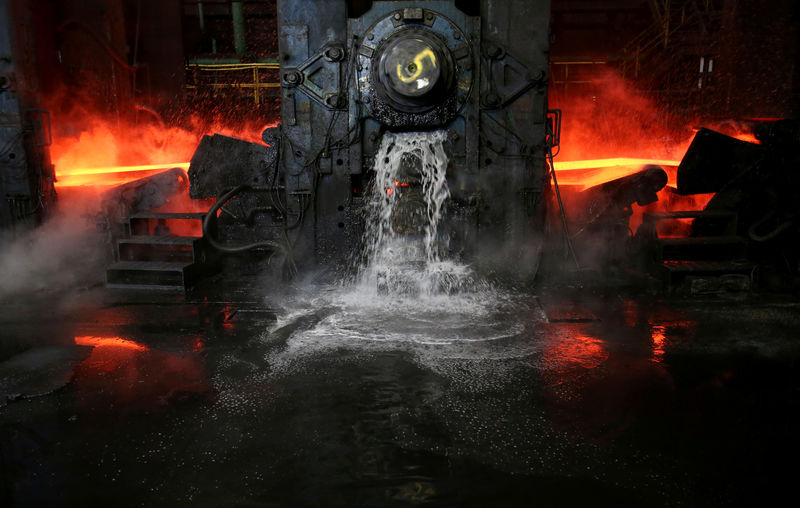By Maytaal Angel and Yuka Obayashi
LONDON/TOKYO (Reuters) - Spurred by a steel-price rally, firms are pouring money into new plants that are set to start producing just as growth in demand for the construction material shrinks, industry executives say, challenging the market's prevailing bull narrative.
Steel prices are up 70 percent since hitting decade lows in late 2015, driven by a cyclical upturn, rising protectionism and nearly 150 million tonnes of capacity cuts in China, producer of half the world's 1.6 billion tonnes of steel.
Shares in global steelmakers have soared since late 2015, when excess steelmaking capacity sparked a sectoral crisis that resulted in shutdowns, bankruptcies and job cuts. ArcelorMittal, the world's biggest, is up 135 percent in that period.
"With the economic upturn over the last two to three years, the issue (of overcapacity) had nearly disappeared," Voestalpine Chief Executive Wolfgang Eder told Reuters at a conference in Tokyo.
"But today it has come back because it seems we are close to or have already seen the peak of the upturn."
Industry association worldsteel expects demand for steel, a $900 billion industry seen as a gauge of economic health, will grow by 3.9 percent this year and 1.4 percent next year.
It does not forecast figures for 2020, but many see demand growth ebbing further that year.
On the supply side, steelmaking capacity could, between this year and 2020, rise by 52-91 million tonnes, or 2.3-4 percent, according to the Organisation for Economic Cooperation and Development. This equates to growth of around 1 percent a year.
"On the surface, (the forecasts point to) demand growth outstripping capacity growth. However, the majority of growth is expected to come in 2018, so there is the fear of what will happen when demand slows," said Jeremy Platt at consultants MEPS.
Steelmaking capacity fell for a second year last year to 2.25 billion tonnes, according to the OECD, narrowing the gap between capacity and production to 561 million tonnes from 730 million a year earlier.
(Graphic: Global steelmaking capacity, production - https://tmsnrt.rs/2Re6mel)
Steel consumers in Europe's auto industry say supply is tight. Delivery times, normally around 12 weeks, are at 20 weeks presently as steelmakers struggle to meet orders, according to industry association ACEA.
However on a global level, a gap between steel capacity and production above 450 million tonnes is considered excessive, suggesting plants have more than 20 percent of capacity idle.
"The problem of the gap between demand and supply has been only half-solved," Koji Kakigi, chief executive of Japan’s second-largest steelmaker JFE Steel, said at the Tokyo conference.
Kakigi and Kosei Shindo, president of Japan’s biggest steelmaker Nippon Steel, also called for the Global Forum on Steel Excess Capacity to continue after its first term ends next year.
The forum was set up by the G20 group of countries in 2016 to tackle overcapacity, as well as the state subsidies that cause it and lead to trade tensions. The United States has been critical of the forum's effectiveness.
Earlier this year, Washington took unilateral action, slapping 25 percent tariffs on steel imports. The tariffs sparked retaliation, eventually escalating into a global trade war that could crimp economic growth.

"While we do not yet foresee a decline in global steel demand, there is clearly a risk that capacity expansions announced today may only come online when the global macro picture is quite different," Jefferies analyst Seth Rosenfeld said.